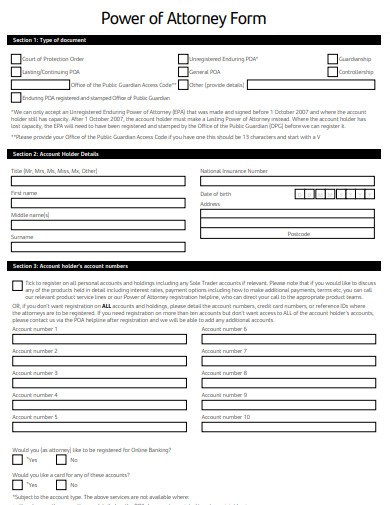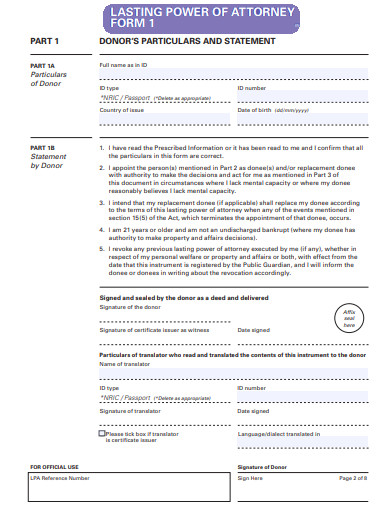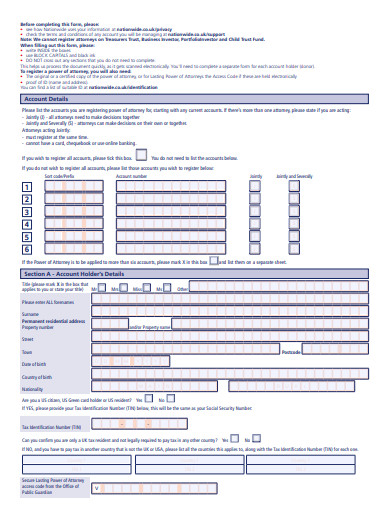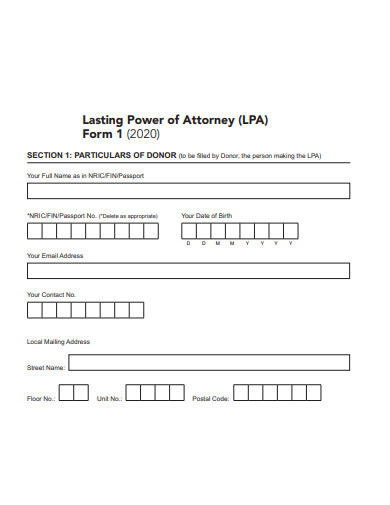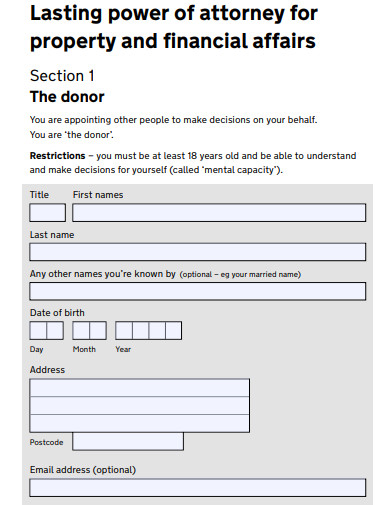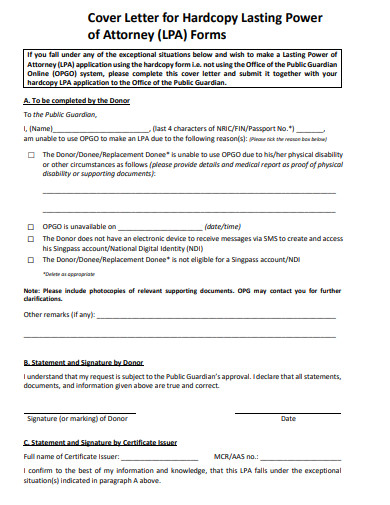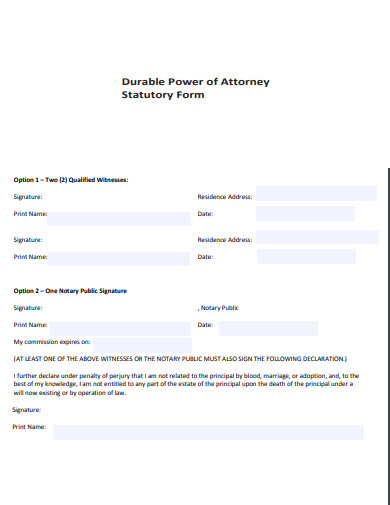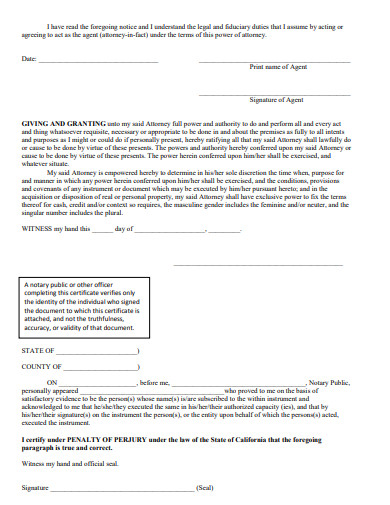Embarking on the prudent path of future planning, a Lasting Power of Attorney form is a legal document that empowers another individual to make decisions on your behalf should you become unable to do so. With types tailored to health, welfare, and financial matters, LPAs are pillars of foresight. This guide illuminates the essence of LPAs, showcases examples, elucidates the creation process, and offers savvy tips to ensure your peace of mind is securely in place.
What is the Lasting Power of Attorney Form ? – Definition
A Lasting Power of Attorney form is a legal instrument that allows an individual, known as the ‘donor,’ to appoint one or more persons, referred to as ‘attorneys,’ to make decisions on their behalf. This arrangement is activated when the donor is no longer mentally capable of managing their own affairs due to illness, injury, or other incapacities. The LPA ensures that the chosen attorney can legally make decisions regarding the donor’s property, financial affairs, health, and personal welfare, depending on the type of LPA established. It is a proactive step to maintain control over one’s life choices even when facing circumstances that impair decision-making abilities.
What is the Meaning of the Lasting Power of Attorney Form?
The Lasting Power of Attorney form embodies the meaning of preparedness and protection. It is a legal document that ensures an individual’s choices and interests are respected and acted upon, even if they lose the capacity to make decisions themselves. These best form is a manifestation of trust and foresight, allowing a person to designate a trusted individual—or individuals—to manage their affairs. The essence of an LPA form lies in its ability to grant peace of mind to the person it protects, knowing that their well-being and assets are in safe hands as per their wishes.
What is the best Sample Lasting Power of Attorney Form?
To provide a best Lasting Power of Attorney form sample , we would follow these steps:
Step 1: Choose the Type of LPA
Decide whether the LPA is for Health and Welfare, Property and Financial Affairs, or both.
Step 2: Gather Personal Details
Collect the full legal names, addresses, and contact information of the donor and all appointed attorneys.
Step 3: Outline the Scope of Authority
Clearly define what decisions the attorney(s) can make. For Health and Welfare, this may include medical care and living arrangements. For Property and Financial Affairs, it can cover managing bank accounts and selling property.
Step 4: Include Safeguards
Detail any restrictions or guidance for the attorney(s), ensuring the donor’s wishes and best interests are respected.
Step 5: Define Replacement Attorneys (if applicable)
Specify details for any replacement attorneys, including the conditions under which they would take over.
Step 6: Certificate Provider
Have a certificate provider, someone who confirms the donor understands the LPA and is not under duress, sign the form.
Step 7: Legal Clauses
Incorporate any necessary legal clauses that comply with the governing laws of the jurisdiction in which the LPA will be used.
Step 8: Signing and Witnessing
Ensure the form is signed by the donor, the attorney(s), and witnessed as per legal requirements.
Step 9: Registration
Provide information on how to register the LPA with the relevant authority since an LPA must be registered to be valid.
Step 10: Contact Information
Include contact information for legal support or the registering body for any follow-up questions.
While specific content and formatting can vary depending on jurisdiction, these steps provide a framework for creating a comprehensive LPA form. It is advisable to consult with or have the document reviewed by a legal professional to ensure its validity and effectiveness. You also browse our Simple Power of Attorney Forms.
1. Business Lasting Power of Attorney Template
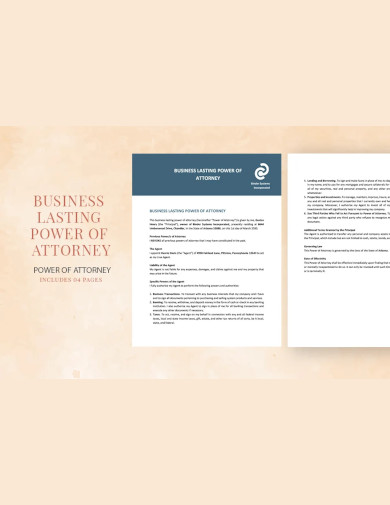
2. Lasting Power of Attorney Form
3. Lasting Power of Attorney Form in Kansas
4. Lasting Medical Power of Attorney Form
5. Lasting Power of Attorney Registration Form
6. Oklahoma Lasting Power of Attorney Form
7. Lasting Power of Attorney Form in Texas
8. Lasting Power of Attorney Form for Property
9. Lasting Power of Attorney Application Form
10. Sample Lasting Power of Attorney Form
11. General Durable Lasting Power of Attorney Form
12. Lasting Limited Power of Attorney Form
How do I revoke a Lasting Power of Attorney form?
Revoking a Lasting Power of Attorney (LPA) is a formal process that should be carried out with care to ensure it is done legally. Here are the general steps you might follow:
- Create a Deed of Revocation: This legal document states your intention to revoke the LPA. It should include your name, address, and a clear statement that you are revoking the power of attorney granted to your attorney(s).
- Capacity: You must have the mental capacity to understand the revocation process and the consequences of revoking the LPA.
- Notify Your Attorneys: Send the Deed of Revocation to all appointed attorneys, as they need to be informed that their powers have been revoked.
- Notify the Office of the Public Guardian (OPG): If the LPA has been registered, inform the OPG or equivalent authority in your jurisdiction with the Deed of Revocation.
- Retrieve All Copies: Attempt to retrieve all copies of the LPA from anyone who has been given one or knows of its existence.
- Documentation: Keep records of all communications and steps taken to revoke the LPA.
- Legal Advice: Consider seeking legal advice to ensure the revocation process complies with your local laws and regulations.
Each jurisdiction may have specific requirements or forms to complete this process, so it’s important to follow the guidelines provided by the legal body in your area that handles LPAs. You should also take a look at our Sample Power of Attorney Forms.
What is the difference between a Health and Welfare Lasting Power of Attorney form?
| Aspect | Health and Welfare LPA | Property and Financial Affairs LPA |
|---|---|---|
| Legal Authority | Make decisions on healthcare and daily living. | Handle financial matters and decisions regarding property. |
| Typical Attorneys | Family members or friends with close personal ties. | Family members or professional advisors like solicitors or accountants. |
| Life-Sustaining Decisions | Can include authority to give or refuse consent to life-sustaining treatment if expressly stated. | Does not cover medical or life-sustaining decisions. |
| Interaction with Third Parties | Regular interaction with healthcare providers and care services. | Regular interaction with financial institutions and tenants. |
| Use for Business Decisions | Not applicable. | Often used to make business-related decisions. |
| Requirement for Professional Advice | Not typically required but advisable for clarity on complex decisions. | Highly recommended due to the complexity of financial matters. |
Related Posts
-
10+ Free New Hampshire (NH) Power of Attorney Form Download – How to Create Guide, Tips
-
10+ Free Nevada (NV) Power of Attorney Form Download – How to Create Guide, Tips
-
10+ Free Nebraska (NE) Power of Attorney Form Download – How to Create Guide, Tips
-
10+ Free Montana (MT) Power of Attorney Form Download – How to Create Guide, Tips
-
10+ Free Missouri (MO) Power of Attorney Form Download – How to Create Guide, Tips
-
10+ Free Minnesota (MN) Power of Attorney Form Download – How to Create Guide, Tips
-
10+ Free Mississippi (MS) Power of Attorney Form Download – How to Create Guide, Tips
-
10+ Free Massachusetts (MA) Power of Attorney Form Download – How to Create Guide, Tips
-
10+ Free Maryland (MD) Power of Attorney Form Download – How to Create Guide, Tips
-
10+ Free Maine (ME) Power of Attorney Form Download – How to Create Guide, Tips
-
10+ Free Louisiana (LA) Power of Attorney Form Download – How to Create Guide, Tips
-
10+ Free Kentucky (KY) Power of Attorney Form Download – How to Create Guide, Tips
-
10+ Free Kansas (KS) Power of Attorney Form Download – How to Create Guide, Tips
-
10+ Free Iowa (IA) Power of Attorney Form Download – How to Create Guide, Tips
-
10+ Free Indiana (IN) Power of Attorney Form Download – How to Create Guide, Tips


